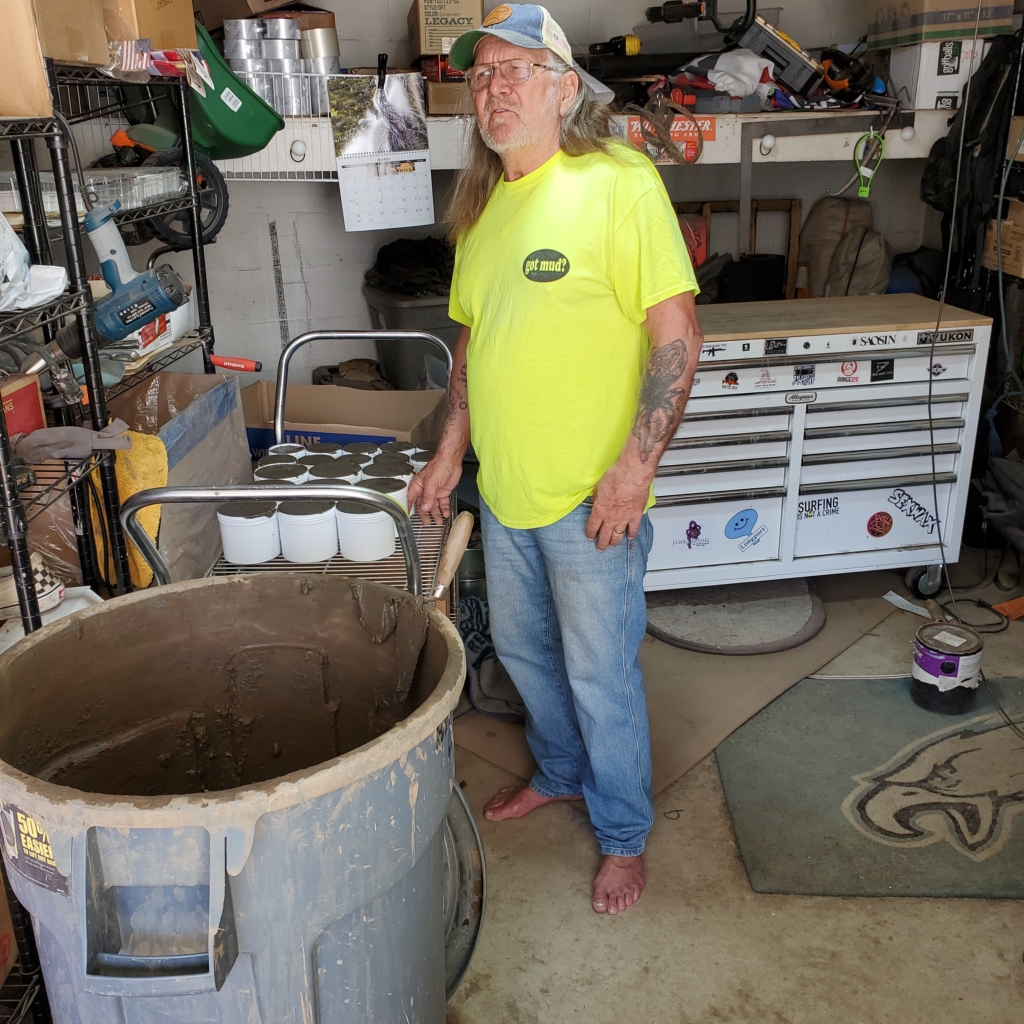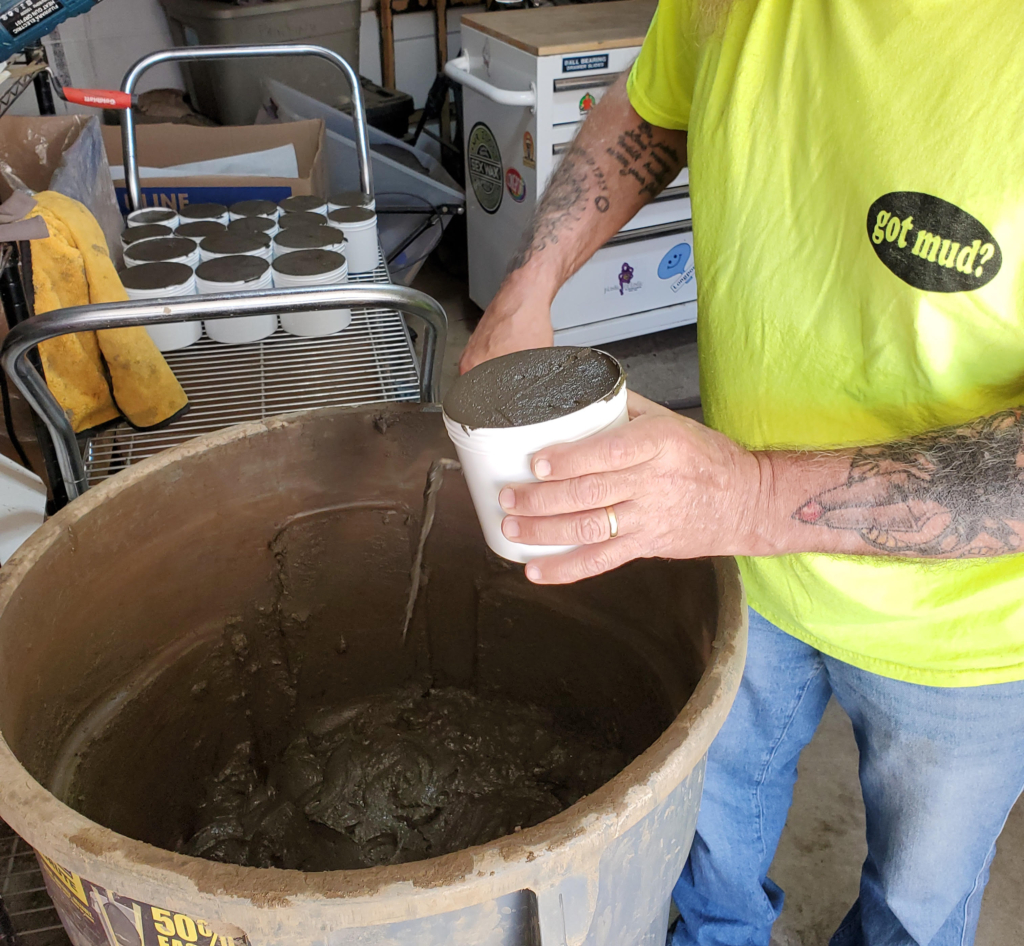
The preparation of each baseball offers an extra incentive for MLB mud producer Jim Bintliff to attend games at Citizens Bank Park and see what he calls his babies. “I love watching the balls.”
The Delaware River is much bigger than assumed on first glance.
Pick an arbitrary point at what is labeled the South Jersey stretch of the Delaware, say Lambertville. From there the river flows past Trenton, Delran, Palmyra, Camden, Gloucester City, Paulsboro and other small towns on the riverfront as it proceeds to Cape May Point, where it opens into the bay and the Atlantic Ocean.
And it is within the tributaries in South Jersey, that mud becomes a significant part of the national pastime, because for 90-plus years, it has been collected and treated it for Major League Baseball. Before a single pitch is thrown, clubhouse attendants gather in parks two hours before game time to dirty as many as 100 brand new balls a day with Lena Blackburne Baseball Rubbing Mud.
Named for its founder, a former player and coach for the Philadelphia Athletics, the so-called “magic” mud came to be in 1938 and is now produced by the Bintliff family, specifically Longport resident Jim Bintliff.
MLB balls have been treated with the mud since 1938 in the American League and 1950 in the National League. The minors and a growing number of colleges have followed. The idea is that the mud takes the edge off the balls and makes them easier for a pitcher to grip – and less likely to get away and plunk someone.
In the pre-mud days in 1920, Carl Mays, a Yankees fastball pitcher, threw a pitch that struck Cleveland’s Ray Chapman in the head. He died the next morning, the only fatality in Major League Baseball of a batter. To prevent a repeat, baseball looked toward the balls and found that the sheen on new ones made them harder to grip and easier to get away from the pitcher.
It took more than 15 years of experimentation by various parties before Blackburne came up with the right compound.
The source of the mud is critical – and a secret. Jim Bintliff will admit only that it comes from one of the Delaware River’s tributaries. A third-generation mudder, he and everyone connected to the operation are also sworn to secrecy on the formula used to create it.
But what is known is that Bintliff gathers and processes the mud, then packs it into what looks like quart containers of creamy dark chocolate ice cream. They are then shipped to ball parks around the country.
Raised in Palmyra, Blackburne fished the Delaware River tributaries growing up with his best friend, John Haas, who happened to be Bintliff’s grandfather. Blackburne discovered the mud had the ingredients that took the harshness off fresh baseballs. He sold the stuff as Lena Blackburne Baseball Rubbing Mud and the name has stuck.
Blackburne initially harvested the mud with help from Haas, to whom he willed the business when he retired, according to the company website. Haas eventually turned over the enterprise to his son-in-law, Burns Bintliff, who in turn passed it on to Jim Bintliff and his family of four brothers and four sisters.
“But in the early 70s, my mom picked me to take over,” Jim Bintliff recalled. “It’s just the way it worked out. I was also the only sibling who remained in New Jersey near the mud.”
Bintliff worked in the printing business near his home in Delran until he retired and moved in 2016 to Longport, where he hauls the mud for preparation and shipment in his garage.
“I recently added a couple of young helpers to harvest,” he said. “I need help carrying five-gallon buckets.”
Bintliff ships the mud out daily but only harvests once or twice a month, all year long. The concoction sits for a couple days while it settles and water pools.
“I dump off the river water for fresh water,” Bintliff explained. “The remaining mud goes into a trash can to marinate up to three weeks.”
Once at the parks, the mud gets smeared on baseballs by clubhouse attendants under the direction of umpires. In the minor leagues, the umpires handle all of it. After processing, the balls end up in a humidor until needed. But clubs must follow a single list of instructions: Scoop two fingertips worth of mud. Paint it across the entire surface of the ball. Rub the ball between both hands for no more than 40 seconds.
“The memo MLB sent to clubs spells out all these steps and more,” Bintliff noted.
Prepping a new ball only takes a tiny bit of mud, he added. Take it out of a container, wet it with a few drops of water and rub it into a soupy paste. Then rub the ball with the mud.
Today, baseballs are prepared before every game using the Lena Blackburne Rubbing Mud, according to Kevin Gregg, vice president of baseball communications for the Phillies.
“That is a requirement of MLB,” he emphasized. “Members of the home team’s clubhouse staff prepare them daily.”
There is a chart for clubhouse staff to follow in the mud application. The balls can’t be too light with mud or too dark.
“It’s just enough to buff the slippery coating off the ball,” Gregg pointed out. “It creates a whole new feel to a baseball.”
Pitchers may have an issue with the treated balls; if so, they can toss them out and ask the umpire for another. Some players said the orbs were too gritty, but the league has not had a complaint in more than a year.
“Every high school or college coach raves about it,” Bintliff stated. “It helps pitchers. It gives a slight advantage to the spin. It controls the ball without breaking any rules.”
Bintliff has expanded mud sales to the public, and the numbers have since quadrupled. The substance also has been used on footballs for 15 years.
“It becomes a collector item,” he observed.
But Bintliff still refuses to divulge why the river mud works. Researchers at the University of Pennsylvania ran tests on it in search of a reason for more than two years.
“It didn’t feel gritty, and it smeared and spread easily,” said Penn researcher Douglas Jerolmack in the March-April issue of the Pennsylvania Gazette. The team found the mud creates a smooth baseball surface by filling in pores on the leather hide holding the ball together. A small amount of sand grains adhere to the ball and create friction.
“The family relies on an extraordinary amount of knowledge to get everything just right,” Jerolmack marveled.
Jim Bintliff is already prepared for the future: the fourth generation. With four children and six grandchildren, the mud business will stay in the family.
These days, preparation of each baseball offers an extra incentive for Bintliff to attend Phillies’ games at Citizens Bank Park. It’s almost like seeing his babies out there, he says.
“I love watching the balls.”

